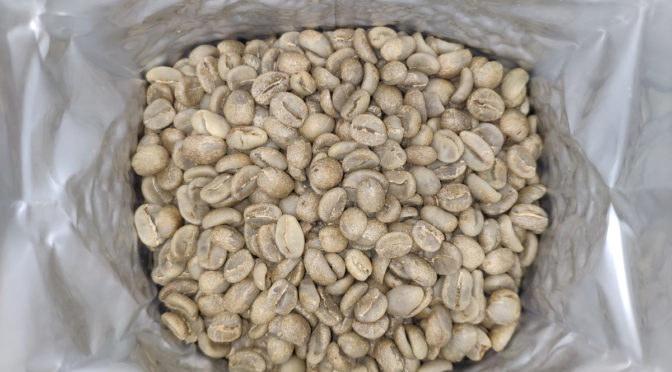Well, it’s been quite the adventure, drinking coffee, that is. I’ve done it for years, my earliest memory is at home in Winnipeg and my Mother had made coffee for a visiting friend. She asked if I wanted some and I agreed. I recall mixing in lots of milk and sugar into the black coffee and liking how sweet it was.
I can’t say I was hooked just yet, but that would come later in life when I started university. But that was cafeteria coffee. You know the type: hazelnut vanilla, caramel macchiato, house blend, or variations of what those were supposed to be. I had no idea how those coffees were made.
It took a rather dull history history class and working two jobs in the summer to start me on the path of drinking what many would consider waaay too much coffee.
But never did I think of how coffee was actually made.
I was content to buy store-made coffee or supermarket coffee, often choosing to buy ground coffee so I didn’t have to do the work myself, not understanding how much fresher coffee tastes if you grind it yourself.
And so grinding my own beans became the next evolution of a sorts, be it Starbucks beans, Salt Spring Beans, or even the cheaper beans sold in bulk. It added an element of freshness even though I was aware that those beans were roasted long before they entered my life.
Years went by and I was able to sample coffees from around the world, especially as I began my travels over a decade ago. Italian coffee wasn’t as good as it was marketed to be, Greek coffee was fantastic (and similar to Turkish coffee preparation), but then there was Vietnamese coffee which was harder to find where I lived in Canada.
I always tried to seek out good coffee wherever I went thinking that the only way to do so was to visit different coffee shops. I didn’t know how to make my own coffee, believing it to be in that mysterious realm of specialized knowledge, intricate machinery, and big business. Plus, where would I even get beans to roast? Don’t you need to buy them in massive sacks measured in kilos?
The answer is no, and I probably should’ve known this since I do recall my very first encounter with green beans in my very own hometown of Winnipeg.
There is a store in Osborne Village, the Godiva shop, under the Japanese sushi restaurant, that sold unique imported items such as green coffee. I remember asking the owner why the beans were green and how he made coffee from them. He replied that you needed an air roaster to fry them up and then you needed to grind them.
It sounded like a lot of steps involved and, worse still, required expensive equipment. I don’t recall how much the air roaster was but it was in the hundreds of dollars and was a rather large, unwieldy device. Not something that could easily be stored in my parents home at the time. Further, how much coffee would I really be able to drink at home given my university and work lifestyle?
I was content to continue drinking store-bought coffee, later adding flavoured creamers and, eventually, moving onto Second Cup and Starbucks coffees when I worked in a bookstore.
Starbucks, of course, is an experience to itself and has pretty much set the standard for coffee around the world, despite what the naysayers might claim. In 2017 I had the chance to visit Seattle and the company’s point of origin.
Not only was there the “original” Starbucks location at Pike Place Market, but then there was the roastery itself where they actually roasted the coffee. And they didn’t hide anything, it was all right there for us to see:
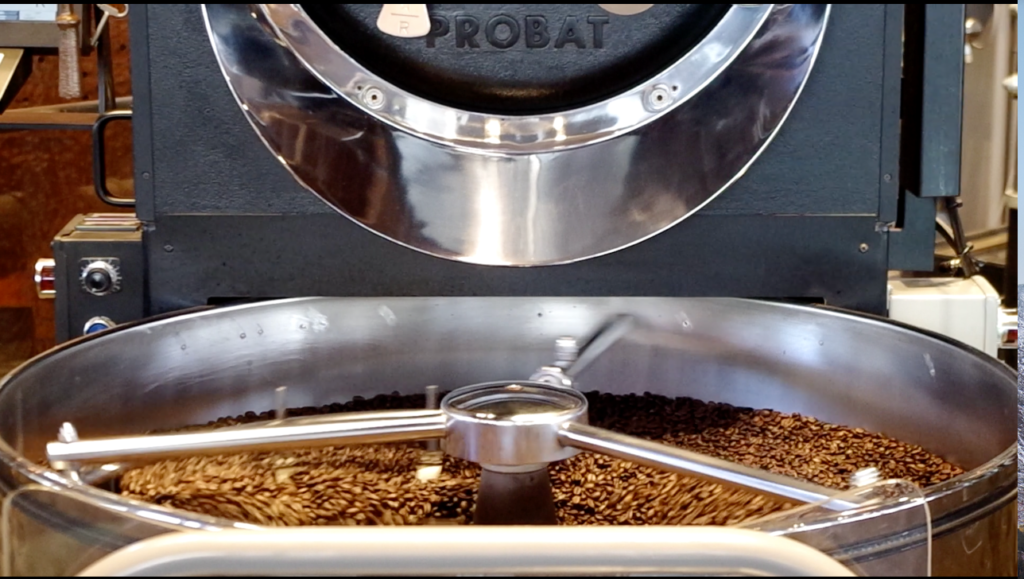
I didn’t realize it was as simple as buying green beans, putting them onto a pan for a few minutes, stirring continuously, and then removing them from the heat. And deflaking them, but you don’t have to.
It’s literally that simple.
If you watch any number of YouTube videos on the coffee roasting process it looks very simple. Starbucks has no secret, neither do any other coffee roasters. What they do have is a form of quality control, access to green beans (some of the best in the world), and the machinery to make large quantities of it. And marketing.
But could one person do it alone? I recall that guy in that Osborne Village shop, maybe he was part of the Coffee Roasting Illuminati or some other sort of club. And you needed an air roaster to be a part of it all! Or you could only roast vast amounts of coffee at once because they’re sold by the satchel instead of nicely packaged one pound bags!
Until one day, many years later, in China where I am currently working, a colleague brought some coffee with him to work and casually said he had made it himself.
I thought he meant grind it but he said “No, I roasted it myself and then ground it.” He went on to explain how it didn’t take long or take much effort, just some more time and vigilance. For me, it then became more of a decision of “why not?” rather than “why?”
I was still a little bit hesitant, I mean, this beverage is in some ways sacred. It’s been with me for at least half of my life time and seen me in all shapes and emotional states. I didn’t want to screw this up.
I mean, what would happen if I did it wrong?
It turns out that green coffee beans are rather cheap compared to their roasted brethren so not only do you get more for your dollar, you’ll have also a greater amount of beans with which to experiment. So, if you mess up, you can always roast more in a different fashion.
So, where do you get green beans? Lots of places! You just have to search for “green coffee beans” instead of “coffee beans” and you’ll find lots of matches! From all over the world! I turned to TaoBao, the online retailer here in China.
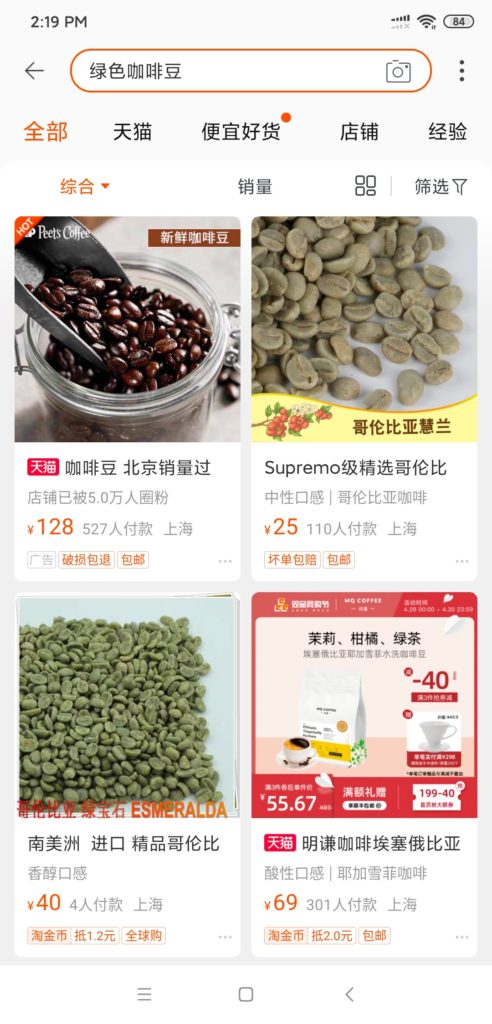
You don’t need much to roast your own coffee: green beans, a pan or skillet, a stove top or burner of some sort, a timer to help gauge how long to fry, and a whisk. After the roast process, it’s helpful to also have another pan to dump the beans into to cool and a colander so you can separate the coffee bean from the flaky chaff.
I already had the equipment!
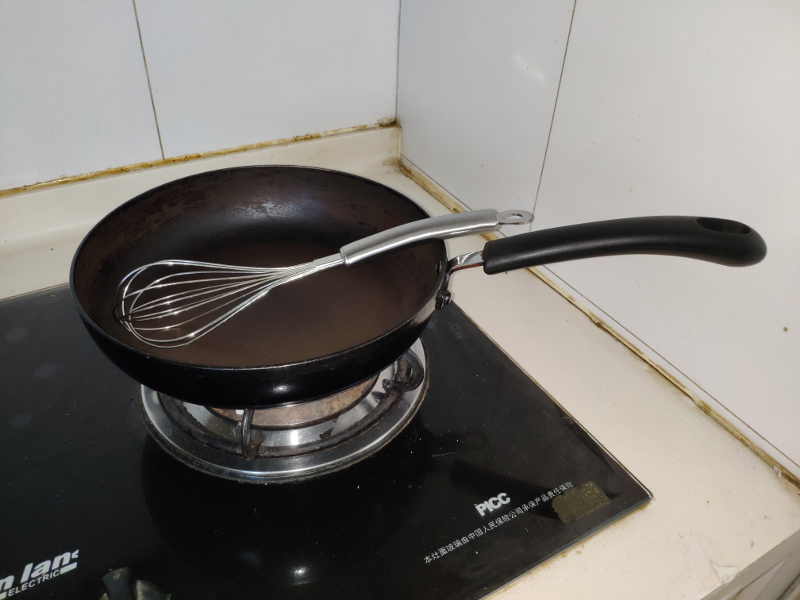
The only thing I needed were the beans themselves.
After looking through the different varieties available and trying to select what seemed to be a reputable seller, I settled on the Bao Shan Coffee supplier.
I bought the more expensive beans offered, 1 kilogram of them, because I was a little timid of the cheaper stuff. Further, if it’s only 118 RMB (~$24 CAD) for a kilo, I normally buy packaged coffee for 100 RMB for 250 grams so, if this worked out, it’d be a cost savings measure in addition to a new thing to do.
The beans shipped from Yunan, which is China’s coffee-growing province and took three days to arrive.
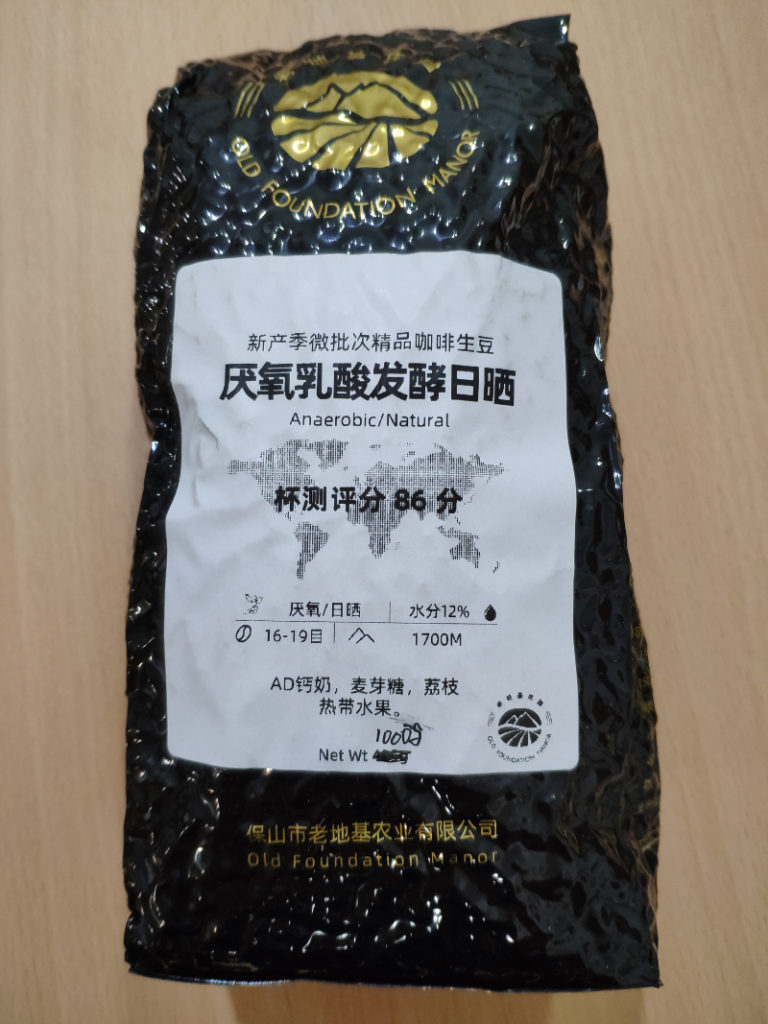
When I saw the bag I was still a little tentative, I hoped they sent me the right stuff and not roasted beans. I was kind of excited to try this out. After all, coffee is something a lot of people have every day and yet very few people make their own. They’ll make their own food, but few people roast their own coffee. Or, at least, in the circles I run in. But, to check, I had to open the bag, and this is what I saw:
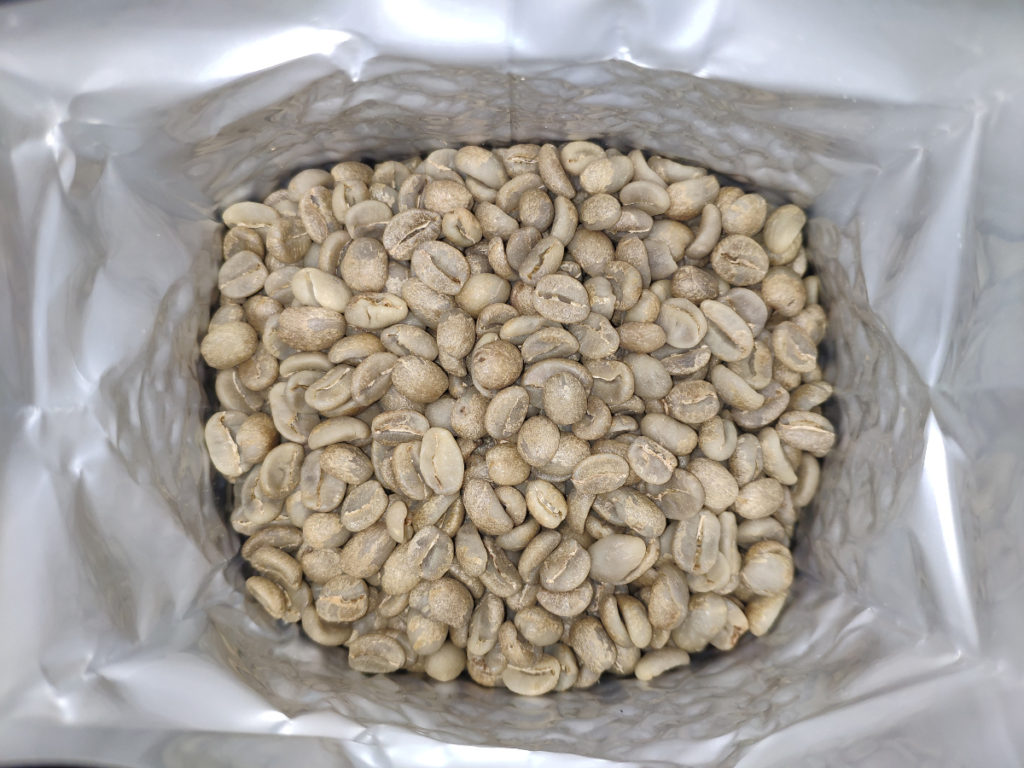
Yup, they’re green alright. And so tiny. They don’t really smell like coffee, more like… a bean. Like any other bean.
Since the packaged arrived in the evening I wouldn’t be able to get to roasting them until the next day. Until then, my curiosity was satiated by holding the green beans in my hands. The other equipment was ready and now I had the last piece of the puzzle. All I had to do was put bean to pan and stir them around. And that would be what I would do the very next day.
